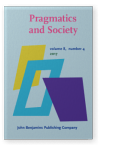Vol. 8:4 (2017) ► pp.498–519
Variations in the use of metaphor at the macro-contextual level
The case of English press news
This article investigates linguistic metaphors in four English newspapers from the perspective of Conceptual Metaphor Theory, focusing on their variations at the macro-contextual level. Analyzed in their respective macro contexts were lexicalized and non-lexicalized metaphors in 1,105 full-length news stories. The exploration reveals that: (i) the distributions of non-lexicalized metaphors are far more variable than those of lexicalized metaphors across the four newspapers, (ii) lexicalized metaphors are much more common than non-lexicalized metaphors in all the four newspapers, (iii) non-lexicalized metaphors occur more in the news stories for native speakers than in those for international or global readers, with a decreasing tendency toward those for EOL and EFL readers, and (iv) the lexicalized and non-lexicalized metaphors both have cognitive functions, while the latter serve additional stylistic purposes. The study sheds some light on the affordance between linguistic metaphors and the macro contexts of the news stories.
Article outline
- 1.Introduction
- 2.Theoretical framework
- 3.Relevant categories of metaphors
- 4.Data and methodological procedure
- 5.Results and discussion
- 6.Concluding remarks
- Acknowledgments
- Notes
-
References
